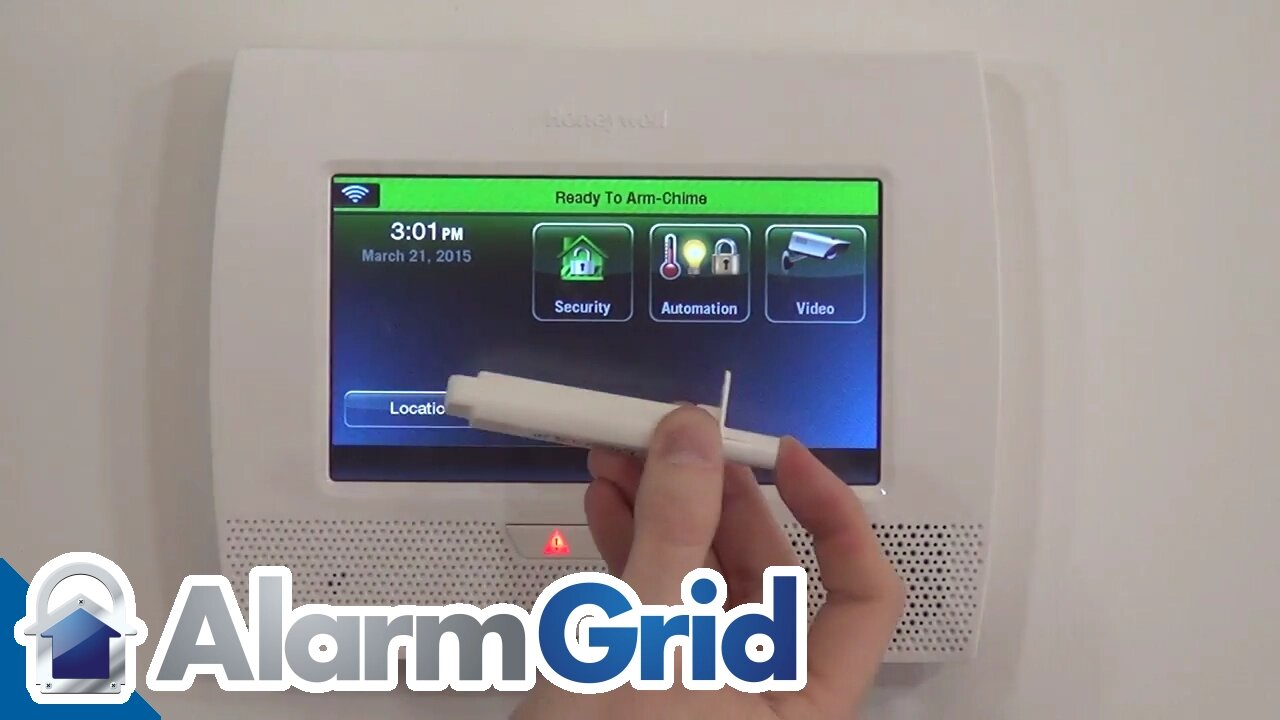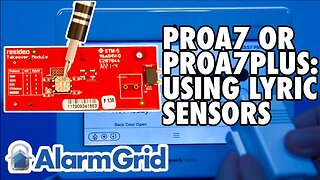Premium Only Content

Honeywell 5818MNL: Program to L7000
Our video guide provides a complete overview of the 5858MNL wireless alarm sensor including installation and setup.
Although they’re small in size, sensors play a big role in a successful alarm system. There are many different types of sensors you can use to cover every potential entry point and area of your home.
In this video, we examine the 5858MNL wireless sensor. This is a recessed sensor which fits inside a wall or door. Our video guide covers installation, operation and everything else you need to know about this sensor.
There are two general categories of sensor: mounted and recessed. They both operate in basically the same way. A magnet is placed on the door or window while a sensor is placed on the wall or doorframe.
The sensors and magnet make a connection. When a door or window is opened, the connection is broken. This will create a response in the alarm system.
Surface sensors are mounted on the door or window. As shown in the video, these sensors are rectangular devices which are slightly bigger than a standard lithium battery. To clarify, external alarms are placed inside your home but are visible when mounted.
Recessed sensors are placed inside doors and walls. You drill a hole in the doorframe and wall. While mounted sensors are generally unobtrusive, recessed sensors are practically undetectable. Not only does this provide an additional layer of security, but recessed sensors are generally more aesthetically pleasing, too.
The video shows you how to program the sensor. You’ll need a small flathead screwdriver to pop off the end cap of the sensor. The circuit board of the sensor slides out of the plastic frame. This is where you’ll attach the battery. The video details the proper way to do so.
After the sensor is in place and properly powered, you’ll need to connect it to the alarm system. Our guide shows you every step. You’ll use the Installer Code to access the System Programming area.
Each device is considered a separate zone. Note that the first zone on the L7000 is reserved for a wired connection, so wireless connections needs to be in zones two or higher.
In order to activate a zone, you need to input the sensor’s serial number. You can do this manually. Each device has a sticker which displays the number you need.
However, we usually recommend the Auto Enrollment mode. Not only is this easier and more accurate than manual activation, but Auto Enrollment also lets you make sure each sensor is working correctly.
As shown in the video, you connect and disconnect the sensor three times. This will automatically pull the serial number and activate the sensor in the proper zone. The sensor is also placed in the appropriate loop.
These sensors usually work best in wooden doors. Recessed sensors can be difficult to install in windows. You also want to avoid metal frame doors, as the metal can interfere with the sensors ability to transmit a wireless signal.
The video details how to label the sensor within the system. Proper labeling allows you to instantly know what area of the house has a potential problem. We also cover the various sensor settings and what situations they work best in.
Properly installed, recessed wireless sensors provide unobtrusive protection for entry and exit points throughout your home.
-
 6:05
6:05
Alarm Grid Home Security DIY Videos
1 year agoPROA7 or PROA7PLUS: Using Lyric Sensors
15 -
 1:16:36
1:16:36
Glenn Greenwald
8 hours agoGlenn Takes Your Questions: On Banning Candidates in the Democratic World, Expanding Executive Power, and Trump's Tariffs | SYSTEM UPDATE #437
117K45 -
 40:09
40:09
Friday Beers
7 hours ago $2.64 earnedWii Golf Gets Heated: Friday Beers vs Full Squad Gaming
41.9K -
 44:53
44:53
Man in America
13 hours agoThe DISTURBING Truth About Tariffs That NO ONE Is Talking About
45.4K44 -
 32:30
32:30
Stephen Gardner
6 hours ago🚨BREAKING: Trump under INVESTIGATION for Stock Market Manipulation!
44.8K134 -
 59:50
59:50
Motherland Casino
3 hours agoMel x Zofie
18.3K3 -
 44:54
44:54
Ami's House
2 days agoThe Dave Smith Debate is Broken. Here's a Better Way In | Dave's Rogan Appearance
40.4K7 -
 3:47:20
3:47:20
SlingerGames
5 hours agoDiving (get it?) Back Into Subnautica!
22.6K1 -
 58:35
58:35
BonginoReport
9 hours agoFormer Trans Athlete Accepts Biological Reality - Nightly Scroll w/Hayley Caronia (Ep.24) - 04/10/25
149K92 -
 2:48:38
2:48:38
The Sufari Hub
5 hours ago🔴NOT ENDING STREAM TILL I WIN - ROAD TO #1 GAMER ON RUMBLE - #RumbleGaming
10.3K1